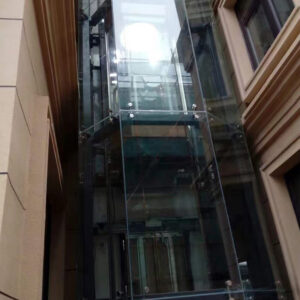Elevator systems are indispensable components of modern buildings, facilitating vertical transportation with remarkable efficiency and convenience. However, behind the seamless operation of elevators lies a suite of essential accessories that contribute to their functionality, safety, and aesthetics. In this article, we delve into the intricacies of elevator accessory kits, exploring their vital features and the significance they hold in ensuring optimal elevator performance.
At the heart of every elevator system lies a carefully curated collection of elevator accessories. These accessories encompass a diverse range of components, each serving a crucial purpose in the overall functionality of the elevator. From safety features to aesthetic enhancements, elevator accessories play a pivotal role in elevating the user experience and ensuring smooth operation.
Table of Contents
ToggleSafety Features:
First and foremost among the essential features of an elevator accessory kit are safety mechanisms. Elevators are subject to stringent safety regulations to protect passengers and prevent accidents. Elevator accessory kits include vital safety features such as emergency brakes, door sensors, and overload detectors. These components work in tandem to ensure that the elevator operates safely under all circumstances, mitigating the risk of malfunctions and accidents.
In addition to these primary safety features, elevator accessory kits often include supplementary safety measures such as fire-rated materials, seismic restraints, and backup power systems. These provisions are essential for ensuring that elevators remain operational during emergencies, such as power outages or natural disasters, allowing passengers to evacuate safely and efficiently.
Operational Enhancements:
Beyond safety considerations, elevator accessory kits also comprise components designed to enhance operational efficiency. These may include advanced control systems, destination dispatch technologies, and predictive maintenance modules. By integrating these features into the elevator system, building owners can optimize performance, minimize downtime, and improve energy efficiency.
Moreover, elevator accessory kits may incorporate innovations such as regenerative drives and energy-efficient lighting systems, contributing to sustainability efforts and reducing environmental impact. These operational enhancements not only benefit building owners by lowering operating costs but also align with global initiatives aimed at promoting eco-friendly practices in urban infrastructure.
Aesthetic Enhancements:
In addition to safety and operational features, elevator accessory kits often include components that contribute to the aesthetic appeal of the elevator interior and exterior. From sleek stainless steel handrails to stylish cabin finishes, these aesthetic enhancements elevate the overall design of the elevator, enhancing the ambiance of the building and leaving a lasting impression on passengers.
Furthermore, elevator accessory kits may offer customization options, allowing building owners to tailor the elevator’s appearance to suit the architectural style and design preferences of the building. Whether it’s a luxurious marble flooring or a contemporary LED lighting system, these aesthetic enhancements add a touch of elegance and sophistication to the elevator, enhancing the overall aesthetic appeal of the building.
In conclusion, elevator accessory kits comprise a diverse array of components that are essential for ensuring the functionality, safety, and aesthetic appeal of elevator systems. From safety features that protect passengers to operational enhancements that optimize performance, these accessories play a vital role in elevating the user experience and maintaining the reliability of elevator systems. By understanding the essential features of an elevator accessory kit, building owners can make informed decisions when selecting and maintaining elevator systems, ensuring that they meet the highest standards of safety, efficiency, and design excellence.


